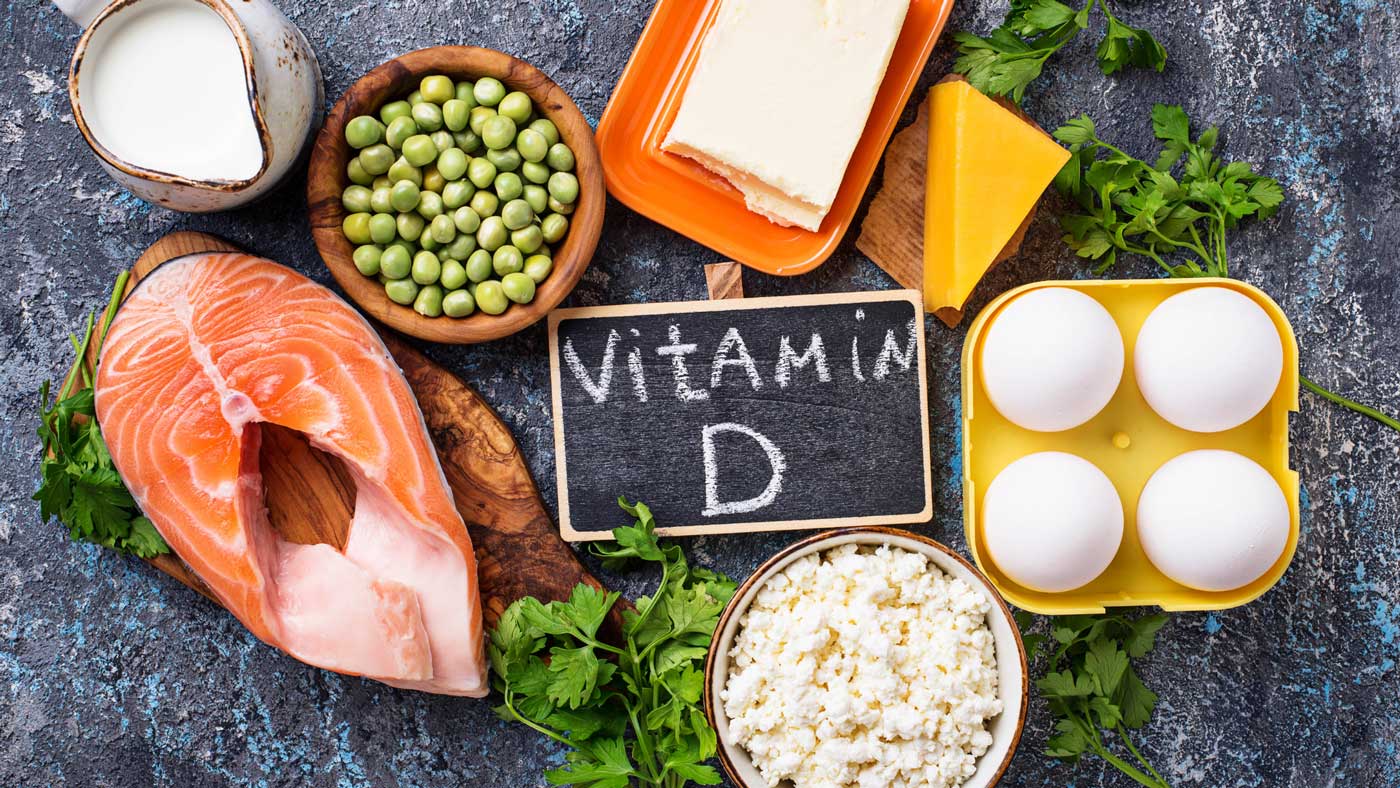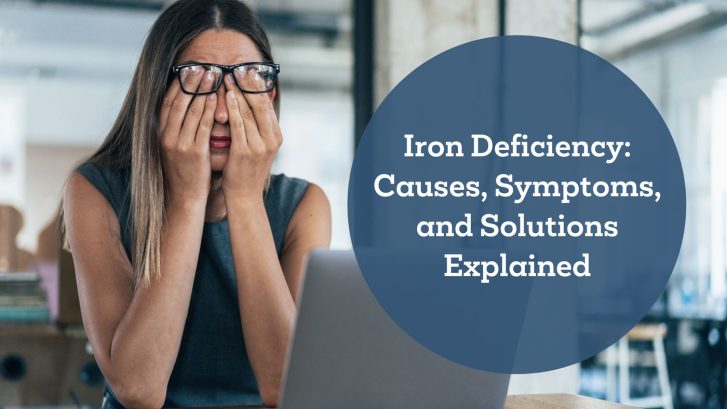Imagine your body as a bustling city, and iron is like the superhero delivery person. Its job is to transport oxygen to every nook and cranny, making sure every cell gets the energy it needs to do its thing.
Sometimes your superhero iron might face a challenge. If there’s not enough iron around, it’s like our delivery person is on holiday, and suddenly, the city starts feeling a bit tired and run-down. Iron is an essential mineral that plays a crucial role in various bodily functions, including the formation of red blood cells and the transportation of oxygen to tissues and organs.
That tired and run down feeling, it’s iron deficiency.
Iron deficiency is when there’s not quite enough of this superhero iron to go around. This can mean our cells don’t get as much oxygen as they’d like, and that can make us feel tired, a bit pale, and not quite as peppy as usual.
How does testing Ferritin levels show iron deficiency?
Ferritin is a protein found in the cells of the body that stores iron. Its primary role is to store iron in a non-toxic, soluble, and bioavailable form. This stored iron can be released in a controlled manner to meet the body’s needs for various physiological functions, such as the production of red blood cells.
Blood levels of ferritin are often measured as an indirect way to assess the body’s iron stores. This is because ferritin levels correlate with the amount of iron stored in the body.
Causes of Iron Deficiency
Inadequate Dietary Intake
Not consuming enough iron-rich foods such as red meat, poultry, fish, beans, and leafy green vegetables is a primary cause. This is particularly common in individuals with restrictive diets, such as vegetarians or vegans who may not obtain enough iron from plant-based sources. Let’s be honest, life is busy and it’s easy to lose track of your nutritional needs but rest assured you can turn this around in little time by adding iron rich foods back into your diet.
Poor Iron Absorption
Conditions affecting the gastrointestinal tract, such as celiac disease, inflammatory bowel diseases (Crohn’s disease, ulcerative colitis), or gastric bypass surgery, can reduce the absorption of iron from the digestive system.
Increased Iron Requirements
Certain life stages and conditions increase the body’s demand for iron.
Common sources of blood loss include:
Menstrual bleeding in women, particularly if heavy and prolonged.
Gastrointestinal bleeding from conditions like ulcers, gastritis, or colorectal cancer.
Regular blood donation or frequent blood testing.
Certain chronic diseases, such as chronic kidney disease, can contribute to iron deficiency. Also, conditions affecting red blood cell production, such as thalassemia or sickle cell anaemia, can also lead to chronic anaemia and iron deficiency.
Consuming substances that inhibit iron absorption, such as tannins in tea and coffee, or calcium-rich foods and supplements taken with iron-rich meals, can reduce iron absorption too.
Some medications, including proton pump inhibitors (used to treat acid reflux), Infections or parasites in the gastrointestinal tract can all reduce iron absorption too.
You might also have your parents to thank as inherited conditions like hereditary hemochromatosis, which leads to excessive iron absorption, can result in iron overload initially followed by iron deficiency.
Symptoms of iron deficiency
Low iron levels, particularly when they lead to iron deficiency or iron deficiency anemia, can manifest in a variety of symptoms and it’s important to note that they can vary in severity and may be subtle in the early stages.
Common symptoms of low iron include:
Fatigue
Feeling unusually tired and lacking energy is a common symptom of low iron levels. This is because iron is essential for the production of hemoglobin, the molecule in red blood cells that carries oxygen around your body.
Weakness or a sense of physical weakness, especially during activities that wouldn’t normally cause fatigue, may be experienced.
Insufficient oxygen to the brain may result in difficulty concentrating and impaired cognitive function.
Physical changes
One of the most noticeable signs of iron deficiency is paleness of the skin. The reduced haemoglobin levels in the blood, which is responsible for the red colour, can result in a paler complexion.
In severe cases, iron deficiency anaemia may contribute to jaundice, a yellowing of the skin and the whites of the eyes because of the breakdown of red blood cells, which releases a yellow pigment called bilirubin.
Poor circulation and reduced oxygen-carrying capacity can make the skin feel cool or cold to the touch.
In some cases, iron deficiency can even contribute to dry and damaged skin.
The colour of the nail beds may become paler than usual, indicating reduced blood flow and oxygen delivery.
Iron deficiency may lead to cracks or sores at the corners of the mouth, a condition known as angular cheilitis.
In severe cases, a bluish tint may be observed in the whites of the eyes (sclera), indicating poor oxygenation.
Some other physical symptoms include:
- Shortness of Breath: Insufficient oxygen delivery to tissues and organs can lead to shortness of breath, particularly during physical exertion.
- Headaches and Dizziness: Inadequate oxygen supply to the brain can result in headaches and dizziness.
- Cold Hands and Feet: Poor circulation because reduced oxygen-carrying capacity may cause extremities to feel cold.
- Swelling or Soreness of the Tongue and Mouth: Iron deficiency can lead to a condition called glossitis, characterised by a swollen and sore tongue. Mouth sores may also occur.
- Restless Leg Syndrome: Some individuals with iron deficiency may experience restless leg syndrome, which is characterised by uncomfortable sensations in the legs and a strong urge to move them.
- Hair Loss: In severe cases of iron deficiency, hair loss may occur. However, this is not a common early symptom.
All of these physical changes can vary in severity, and not everyone with iron deficiency will experience all of these symptoms. Additionally, other health conditions may contribute to similar skin changes.
It’s important to remember that these symptoms can be caused by various health conditions, and iron deficiency should be confirmed through blood tests. If someone is experiencing these symptoms or suspects iron deficiency, they should seek medical advice for proper diagnosis and appropriate treatment. Iron supplementation or dietary changes may be recommended based on the severity and underlying cause of the deficiency.
Treating Iron Deficiency
1. Dietary Changes
Incorporating iron-rich foods into your diet is essential for maintaining optimal iron levels and preventing iron deficiency.
There are two types of dietary iron: heme iron, found in animal products, and non-heme iron, found in plant-based and fortified foods.
While heme iron is generally more easily absorbed by the body, combining non-heme iron sources with vitamin C-rich foods can enhance absorption.
Here are some excellent sources of iron:

Heme Iron Sources (Animal Products):
- Red Meat – Beef, particularly organ meats like liver, is a rich source of heme iron.
- Poultry – Chicken and turkey, especially the dark meat, are good sources of iron.
- Fish – Fish, such as salmon, tuna, and sardines, are good sources of heme iron.
- Shellfish – Clams, mussels, oysters, and shrimp are high in heme iron.
- Eggs – Eggs, especially the yolks, contain heme iron.
Non-Heme Iron Sources (Plant-Based and Fortified Foods):
- Legumes – Beans, lentils, and chickpeas are excellent sources of non-heme iron.
- Tofu – Tofu and other soy products provide a good amount of non-heme iron.
- Nuts and Seeds – Pumpkin seeds, sunflower seeds, and certain nuts (like almonds and cashews) are rich in iron.
- Whole Grains – Fortified cereals, whole wheat, quinoa, and oats contain non-heme iron.
- Vegetables – Dark leafy greens, such as spinach, kale, and Swiss chard, are high in non-heme iron.
- Dried Fruits – Dried apricots, raisins, and prunes are good sources of non-heme iron.
- Fortified Foods – Some foods, like certain breakfast cereals and plant-based milk alternatives, are fortified with iron.
2. Iron Supplements
In cases where dietary measures are insufficient, iron tablets and supplements may be recommended. However, it’s essential to consult a healthcare professional before starting supplements.
3. Vitamin C Intake
Vitamin C enhances iron absorption. Consuming vitamin C-rich foods alongside iron-rich foods or supplements can be beneficial.
Consuming vitamin C-rich foods alongside non-heme iron sources can boost absorption. Consider adding the following to your meals:
- Citrus fruits (oranges, grapefruits, lemons)
- Strawberries
- Bell peppers
- Tomatoes
Conclusion
If iron deficiency is due to an underlying medical condition affecting iron absorption or causing chronic blood loss, treating that condition is crucial.
Regular Ferritin blood tests can help monitor iron levels and adjust treatment as needed.
Testing ferritin levels indicates the levels of iron stored in your body and because of this, SmithBiomed have at home Ferritin Iron Deficiency Tests kits so you can monitor your iron levels.
The Ferritin Iron Deficiency Test is a rapid chromatographic immunoassay for the qualitative detection of ferritin in human fingerstick blood at a cut off concentration of 30 ng/mL.
It’s important to note that self-diagnosis and self-treatment can be risky. If the test is positive for, or suspect iron deficiency, it’s advisable to consult with a healthcare professional to diagnose iron deficiency and give you an evaluation and guidance tailored to your specific needs.

